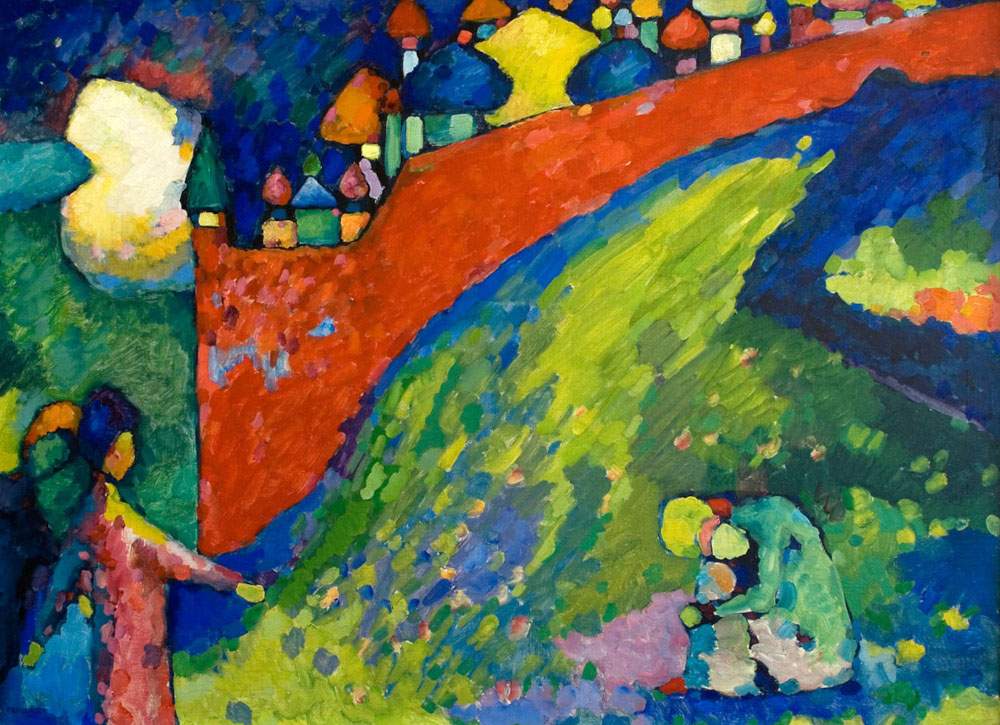Kandinsky's art is retraced in Rovigo exhibition. No request to return works from Russia
In Rovigo, at Palazzo Roverella, the exhibition Kandinsky. The Work / 1900-1940, curated by Paolo Bolpagni and Evgenia Petrova and promoted by the Fondazione Cassa di Risparmio di Padova e Rovigo in collaboration with the Municipality of Rovigo and the Accademia dei Concordi.
The exhibition is divided into twelve sections, in addition to an introductory room reserved forRussian folk art, with in particular a focus on the artistic expressions of the peoples of Vologda (northern Russia), with whom Kandinsky came into contact during a stay in that area in 1889. On display are as many as eighty works by the artist, as well as original edition books, documents, photographs, rare period films, memorabilia and folk art objects, thanks to loans from international European and Russian museums. It is learned these days from the Cariparo Foundation’s head of communications, Alessandra Veronese, after rumors about the possible return of some paintings to Russia, that "Palazzo Roverella has not received any requests for the return of loans and that there are no works on loan from the Hermitage in the exhibition." Of the eighty works on display, forty-nine come from Russia: specifically, thirty-six from the State Museum in St. Petersburg, two from the Pushkin Museum in Moscow, six from the State Tretyakov Gallery in Moscow, and five others from smaller state museums.
The exhibition begins with Vasily Kandinsky ’s (Moscow, 1866 - Neuilly-sur-Seine, 1944) beginnings in Munich, where the artist had moved in 1896 to study painting after abandoning a career in law. After a period of wandering between West-Central Europe and Russia, he settled in Murnau, Bavaria, in 1908. Significant is his relationship with the composer and painter Arnold Schönberg (on display with two important paintings), as music will be crucial in the transition from figuration to abstractionism. One section is devoted to the Blue Horseman group, then the return to Russia (1914-1921) and the experience at the Bauhaus (1922-1933) to his final years in France.
Works featured include Improvisation 11 (1910), Rider (1909-1910), Mittengrun (1932), Le Noeud rouge (1936), Destiny (The Red Wall) (1909).
For more info: palazzoroverella.com
Hours: Monday through Friday 9 a.m. to 7 p.m.; Saturday, Sunday and holidays 9 a.m. to 8 p.m.
Tickets: Full 12 euros, reduced 8 euros for visitors aged 6 to 18, university students, over 65, military with ID, groups of adults on organized tours with free admission for one accompanying person, groups of adults on fixed-timetable guided tours, discounted categories. Free for children up to 5 years old, accompanying school groups, licensed tour guides; Roverella Card holders.
Image: Vasily Kandinsky, Destiny (The Red Wall) (1909; oil on canvas, 83 x 116 cm; Astrakhan, The P.M. Dogadin Astrakhan State Art Gallery)
 |
| Kandinsky's art is retraced in Rovigo exhibition. No request to return works from Russia |
Warning: the translation into English of the original Italian article was created using automatic tools. We undertake to review all articles, but we do not guarantee the total absence of inaccuracies in the translation due to the program. You can find the original by clicking on the ITA button. If you find any mistake,please contact us.



























